1
HOME > Tips & Advice >
OFFICE WARDROBE: WHAT TO WEAR BACK TO WORK
Written by Ivan Yaskey in Tips & Advice on the 2nd September 2021
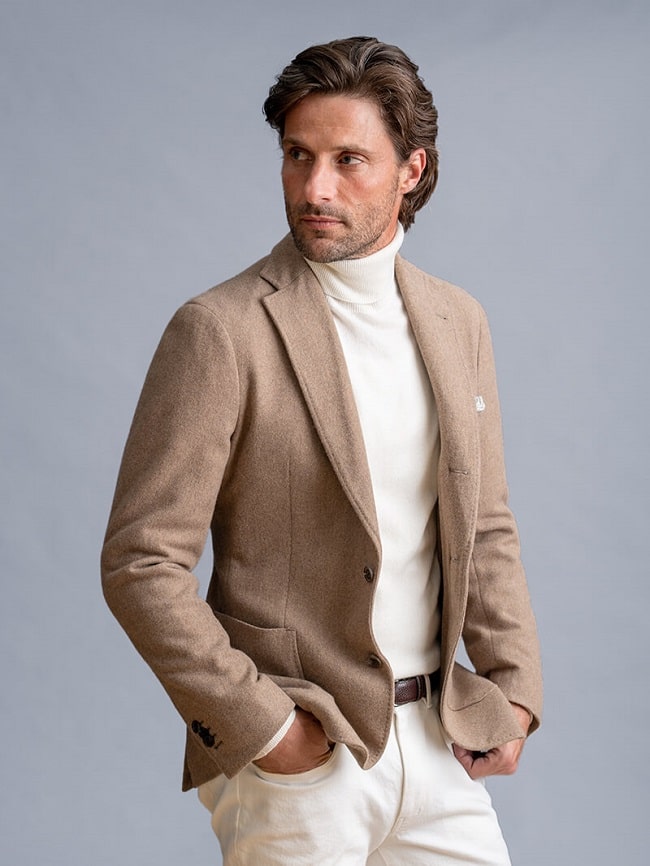
Office? What office? You’re contently getting your 9-to-5 done at home, perhaps pushing it as a 10-to-6 or being one of those early risers who skips the time you used to spend commuting to head straight for your inbox. You’re being proactive, you have your new routine, and you’re getting used to your new threads.
Yes, you make sure you’re wearing something with buttons (a chambray shirt? a polo? It’s all good) when you have that Zoom call with a client or some higher-ups. You might even put on a blazer. But, you’ve gotten used to – or might even have started to like – this new normal while the rest of the world rightly poses restrictions to get us all safely through this leg of the pandemic.
Still, on both sides of the Atlantic, society is opening up. Stores frequently don’t require masks, sports matches and even music festivals are on, and workplaces are beckoning their employees to return – even if only on a part-time in-person basis.
So, if you’ve spent the past 18 months in sweats and T-shirts, how do you re-approach dressing for the office? The answer is, it’s kind of complicated. A recent study by Charles Tyrwhitt found that 50% of workers have returned to the office to find a more relaxed dress code compared to before the pandemic, the timeless suit and shirt still lead the way when it comes to making a strong first impression – over 65% of men believe this and almost a third feel more productive when they’re dressed smartly.
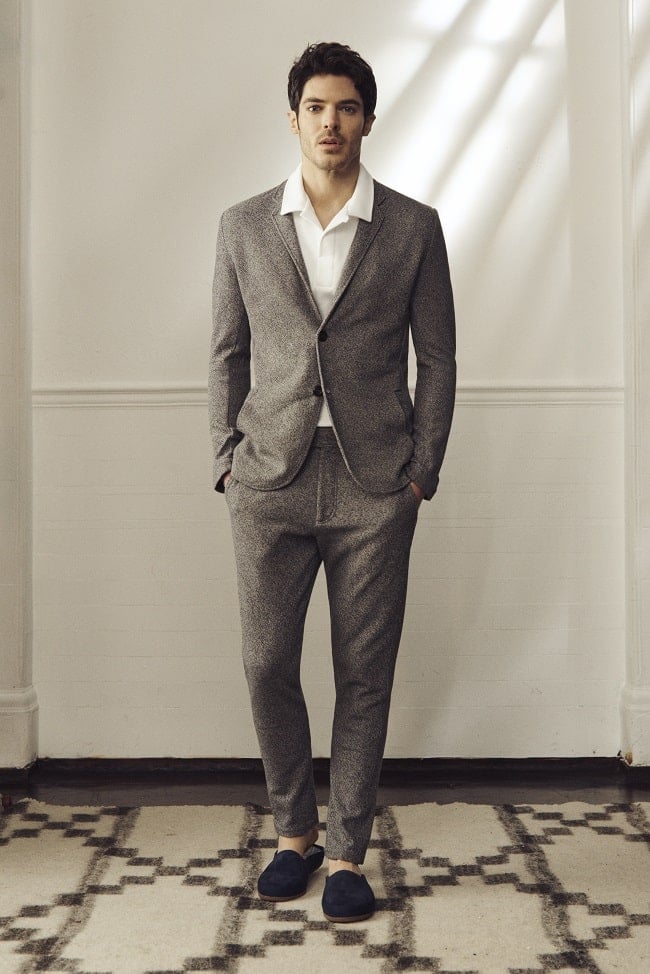
What’s a Post-Pandemic Work Wardrobe?
We’re seeing post-pandemic Fashion Weeks. The suit’s been presented as the post-pandemic ensemble we all want to wear. Yet, trends are just that – predictions – and what’s pushed or aspirational doesn’t always reflect our day-to-day lives.
Illustrating a shift, a survey of American consumers from Klarna found that most individuals don’t intend to return to their post-pandemic wardrobes. Rather, they’re vying for something more comfortable.
Is that sweats and shorts in the office? That’s hard to say. Businesses have yet to change their dress codes – or even re-organize open-office plans – and at least as you shift toward some degree of normalcy, remembering the old rules gets you off on the right foot.
This is especially true if you plan to meet with clients or your superiors. Impressions matter, whether you’re going through Zoom or an in-person meeting, and your clothes communicate your professionalism and indirectly frame your ideas.
But even if you’re not in meetings that could elevate your career, your co-workers – at least those who are coming into the office and have yet to succumb to the Great Resignation – will be within the same space as you. From pleasantries onward, they haven’t seen you in months. We’ve all tried new hairstyles, and many of us have dealt with maskne and the quarantine 15, but regardless, you all set the tone for the office – awkwardness to normalcy to just getting your work done.
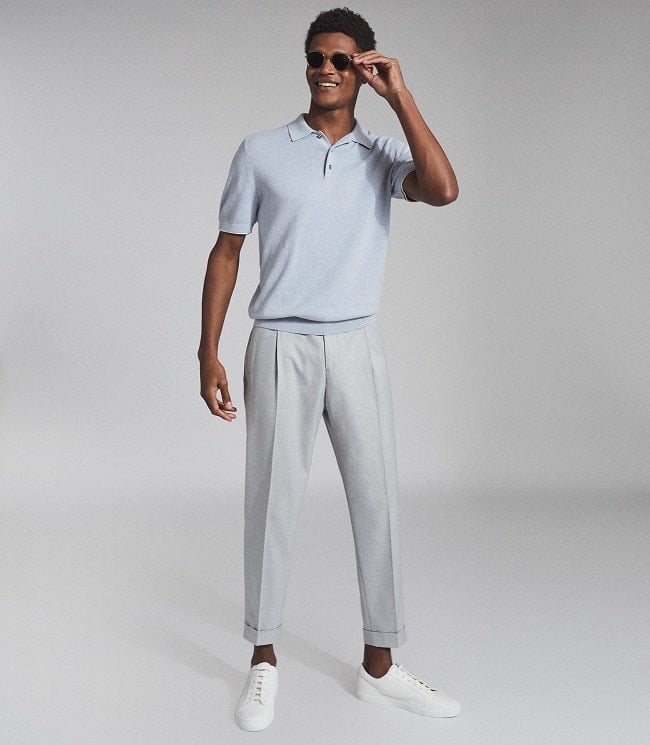
So, as a baseline, what does this look like? The truth is, ensembles will vary based on industry, but whatever you wear should communicate dedication and responsibility – as a foundation, clean and ironed. Secondly, avoid overt athleisure – we’ll touch on what this means shortly. Instead, you can’t go wrong with classic pieces: If not a suit, then a blazer, a button-front shirt or polo, and chinos are sufficient.
On the other hand, the pandemic brought about a counterpart to smart-casual dressing. Call it “workleisure,” “power casual,” or “covert athleisure”: It’s based on a smart-casual framework but subtly incorporates comfort. It’s chinos with a drawstring or hidden elastic waist, and button-down shirts constructed with just a touch more stretch. Cardigans instead of blazers also fall within this scope, as do classic silhouettes made with more of a knit rather than woven material.
Building off this, working from home for at least the past year put many of us in touch with our individual sense of style. This just isn’t sweats and T-shirts, however, but opting to do your work with more colour and flair. Unless your workplace is a strictly neutrals environment, it’s sort of expected – especially if your co-workers spotted you in that landscape print camp collar over Zoom – that this will continue, perhaps slightly more muted and tastefully.
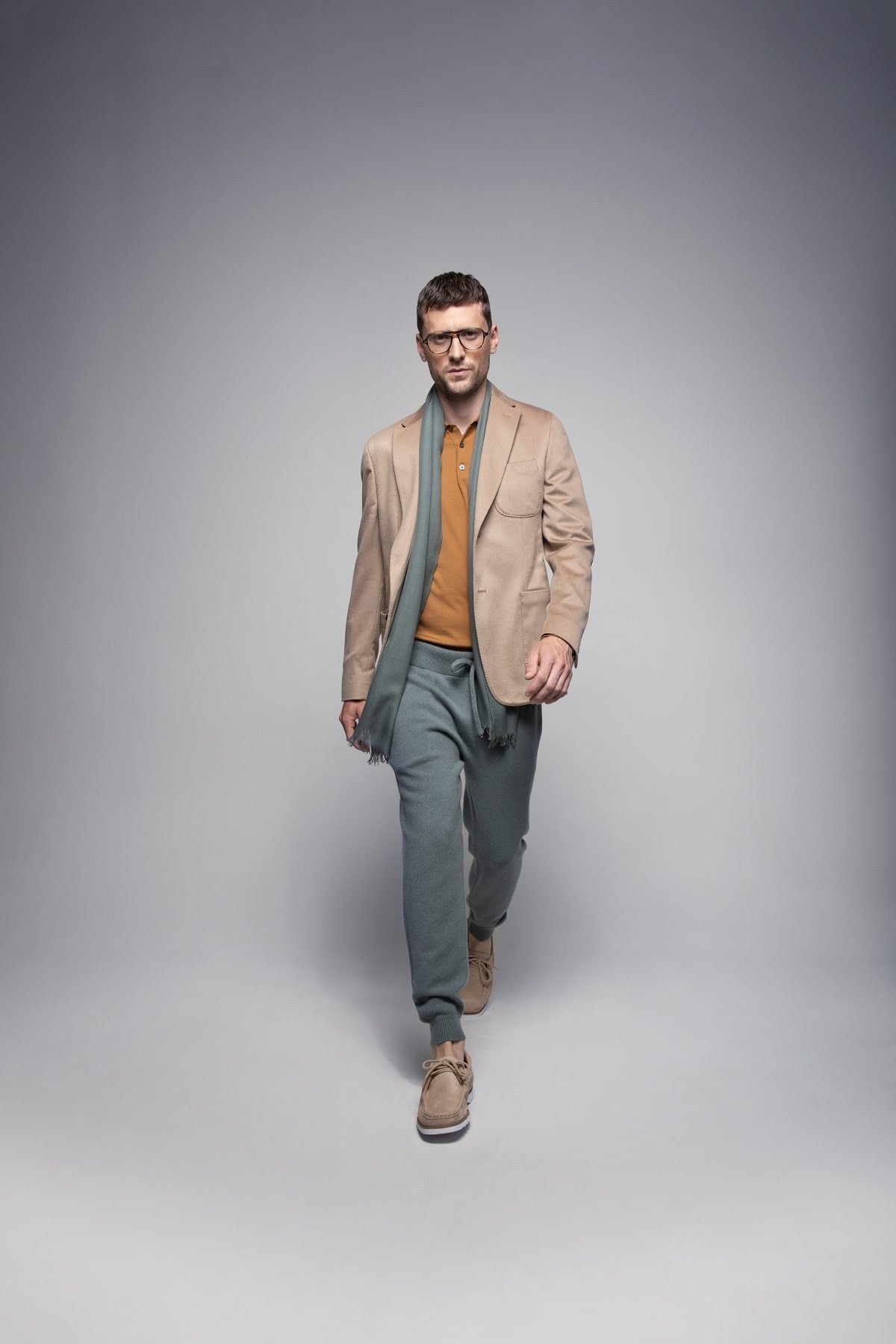
The Building Blocks of a Post-Pandemic Wardrobe
Lee Chambers, acclaimed psychologist says "The balance between formality and comfort has certainly become a pressing challenge over the past 18 months, and while there is an increased appetite for casual dress codes, the benefits of what we call enclothed cognition, come when we feel confident in our attire and feel that it represents working environments. Feeling dressed for work puts us in a psychological state where we can attach to our tasks, perform optimally and step forward confidently. It also gives us fewer worries about how we may be perceived, and fewer decisions to make on whether we are smart enough for the hybrid way of working, and these concerns can drain our brainpower, making us less productive.” Based on these parameters, what can you do to revive or overhaul your current work-at-home wardrobe?
Start on Top
Although T-shirts fit within the spectrum of smart-casual, they just barely make the cut – and they’re not ideally what you want to wear when you’re meeting with the CEO or a client. Instead, consider a button-down – this time of year, short sleeves work, as does a colourful print beyond the restrictions of plaid, checks, and stripes. Or, go for a polo – not the baggy ‘90s middle-manager version, but the slimmer, more structured athletic interpretation that you can wear on the golf course later.
Although cotton is perfectly serviceable, the “workleisure” version swipes it out for a technical knit, cotton/spandex blend, or air mesh.
Along with your shirt, be ready to wear a light jacket. However, don’t make the mistake of sporting a hoodie or even a bomber – it gives off a strong work-from-home or tech culture vibe. An unstructured blazer takes it a level up, perhaps made out of linen considering the current weather, or look for a cardigan that’s cut to the hips.
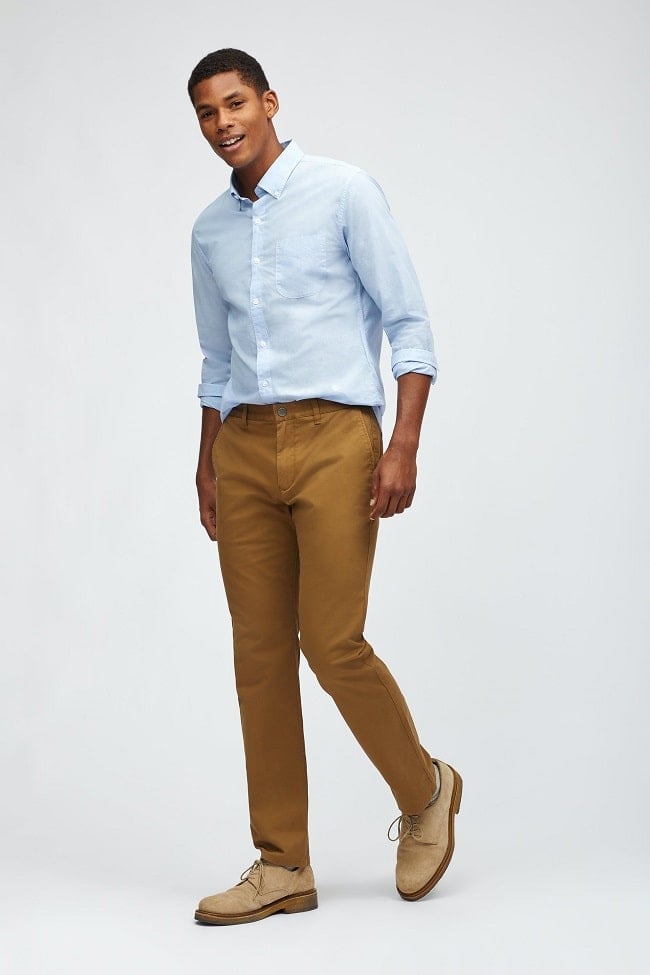
Put as Much Effort into Your Trousers
Don’t be a work-from-home stereotype: At this point, that’s someone putting their best dress shirt on top and keeping their sweats on below the waist. Rather, the biggest transition back to the office for many involves assessing their head-to-toe ensemble.
You’ll likely have to get into a pre-office mindset: Chinos or dark-coloured denim without rips or distressing communicates a baseline of professionalism. The workleisure version gives you some space – literally – with elastic and an accompanying drawstring.
Then, rather than flipflops or Crocs, now’s the time to put on your pair of dress sneakers or even a pair of loafers.
Seek Out Quality Materials
Materials tend to be the greatest differentiator between truly casual and work-appropriate fashion. It might seem obvious, but avoid fabrics that are too thin, too sheer, or visibly stretch. Also steer clear of anything giving off a distinctive athletic vibe – think heathered tees or anything made of terrycloth or shiny polyester. Along the lines of leaning toward classic, continue to look for materials that feel like cotton or another natural fiber, like linen, wool, or silk. The fabrication doesn’t have to be 100 percent, but whatever you’re sporting shouldn’t seem like you’re about to jog off to the gym.
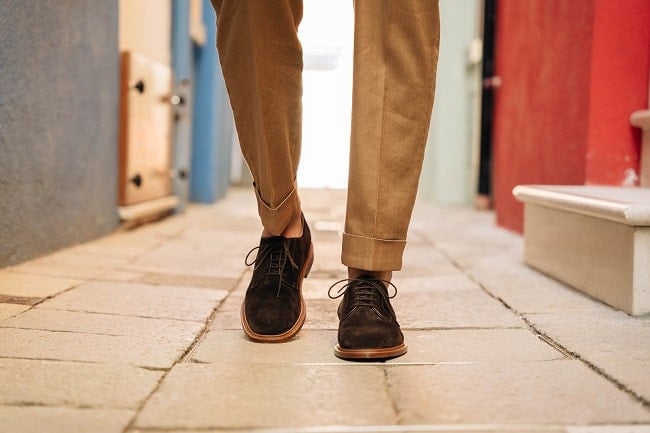
Add Some Personality
Some might say that pre-pandemic, expectations resulted in a particular work uniform for many guys: Chinos or denim, coupled with a high-end fleece pullover, itself worn over a plaid or checked button-front. Perhaps this was in response to offices cranking up the air conditioner, or that humans are truly creatures of habit, all striving to blend in. Without that inadvertent hivemind mentality, however, we’ve all had a chance to evaluate what we like to wear on a day-to-day basis.
In turn, bring out a degree of your personality as you return to the office. Your co-workers have seen your home or apartment, to some extent, and likely spotted your house plants or pet somewhere in the background. Two years ago, this level of intimacy was practically unheard of – especially among those who prefer to separate their work and home lives. Thus, in response, you have a bit more freedom to let who you are visually show. As already mentioned, you can do this through a print, or opt for a more individualistic accessory, be it from your work bag, a pocket square, or piece of jewellery.
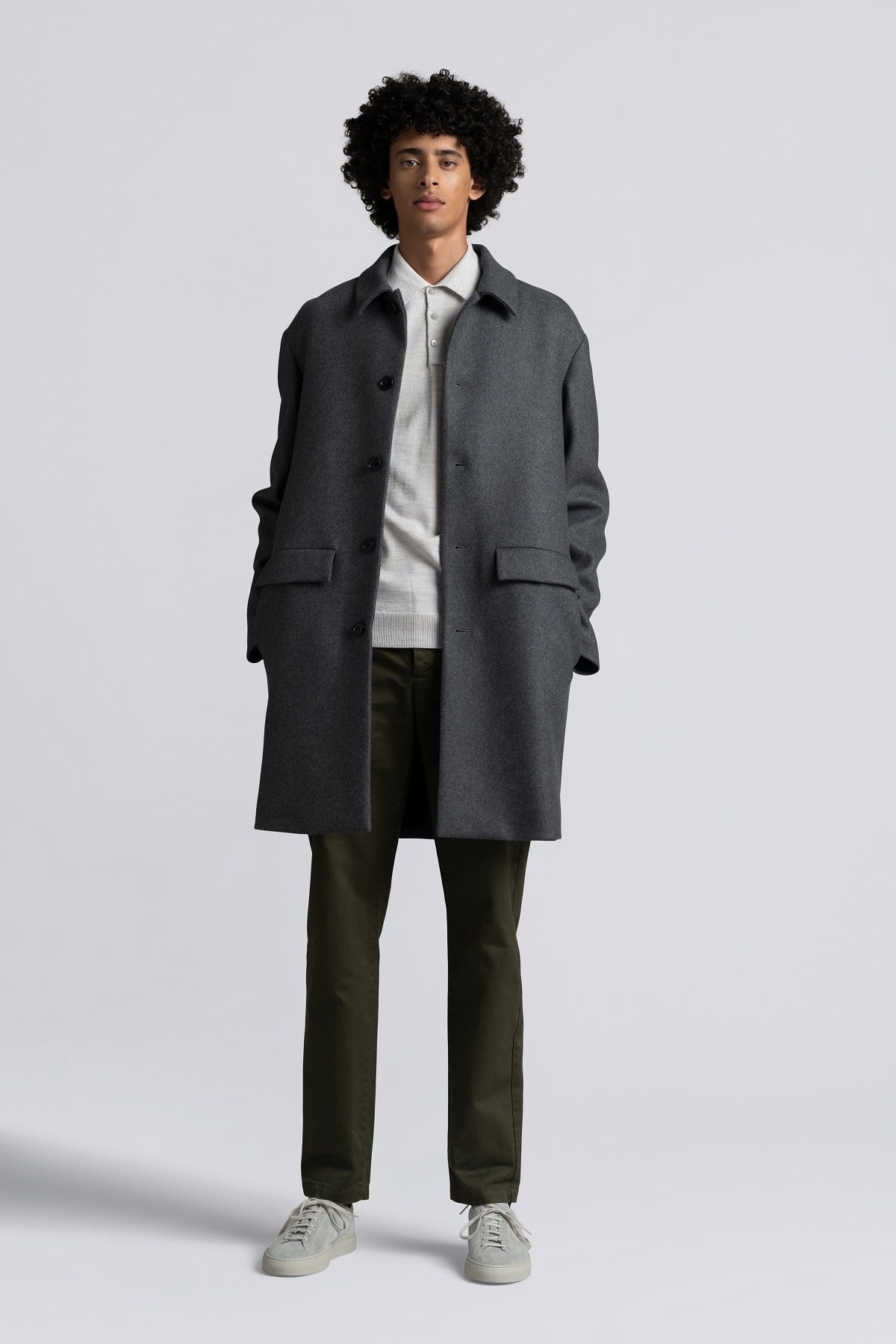
On your return to the office what are you planning to wear? #style
— Menswear Style (@MenswearStyle) September 2, 2021

Trending
2
3
4
5
6
7
8
9
10










